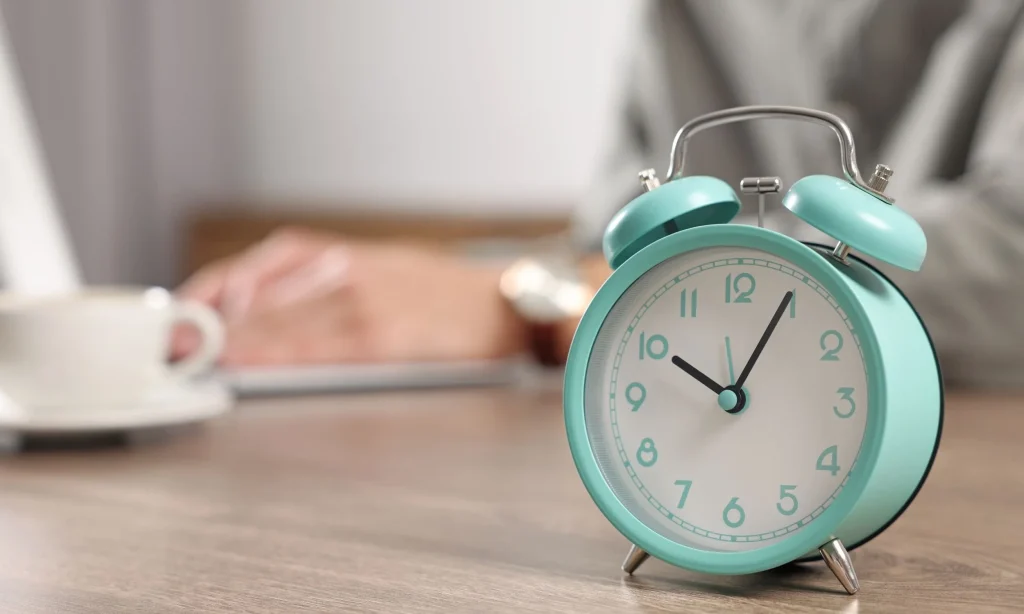Quick Detachment Techniques: How to Reduce Clutter in a Day

Overwhelmed by clutter?
Finding yourself surrounded by unnecessary items can be frustrating. The mess not only affects your mental clarity but can also impact your productivity. Fortunately, quick detachment techniques can help you reclaim your space in just a day.
Why focus on quick detachment?
Reducing clutter is more than just tidying up. It’s about creating a living environment that promotes peace and functionality. Clutter can serve as a constant reminder of unfinished tasks or unresolved experiences, often leading to increased stress levels. By engaging in quick detachment, individuals can not only achieve a visually appealing space but also enhance their emotional well-being.
Here are some compelling reasons to dive into quick detachment:
- Enhances mental clarity: A tidy space translates to a tidy mind. Studies have shown that individuals working in cluttered environments tend to be easily distracted, making it difficult to focus on tasks. A clean space allows thoughts to flow more freely, enhancing creativity and problem-solving abilities.
- Boosts productivity: Clear surroundings create the perfect backdrop for focus. In environments where space is limited, like many urban settings in Nigeria, finding effective storage solutions can significantly improve workflow and reduce time spent searching for everyday items.
- Encourages better decision-making: Less clutter means more ease in choosing what to keep. The act of continuously sifting through items can lead to indecision. However, by adopting quick detachment strategies, one can streamline choices and prioritize what truly matters.
Nigerians often face the challenge of limited space, especially in urban areas. Cities like Lagos are known for their bustling activity and densely populated neighborhoods, where many families live in compact homes. Embracing a more minimalistic approach in these scenarios can free up additional room for essentials, creating a more enjoyable living environment. For instance, investing in multi-functional furniture can help maximize space usage while adding aesthetic appeal.
Ready to get started?
In this article, we will explore intuitive methods to declutter your space swiftly and effectively. Techniques like the one-touch rule, which encourages handling an item only once to determine its value, and the 30-day minimalism challenge, where participants remove one item a day for a month, are examples of practical strategies that can transform your environment.

Stay tuned as we guide you through making a significant impact in just one day! By dedicating a short period to focus on decluttering, you can reap long-term benefits that enhance both your living space and overall well-being. Whether you are looking to create a serene sanctuary at home or simply aiming to clear out the chaos, our tips will set you on the path to success.
CHECK OUT: Click here to explore more
Kickstart Your Decluttering Journey
When it comes to reducing clutter, the right approach can make all the difference. Quick detachment techniques are designed to streamline the process, enabling you to make impactful changes without feeling overwhelmed. Understanding these methods not only simplifies the decluttering journey but also empowers you to maintain an organized space into the future.
Essential Quick Detachment Techniques
Before diving headfirst into decluttering, it’s important to recognize the variety of techniques available. Selecting the right one for your situation can lead to quicker results and a more satisfying experience. Below are a few popular methods you can consider:
- The One-Touch Rule: This technique encourages you to handle an item only once before deciding its fate. If you pick up something from a surface, you must either put it back in the right place, donate it, or discard it. It sounds simple, but this method can drastically reduce the tendency to procrastinate when dealing with clutter.
- The 20/20 Rule: For items that take up considerable space, the 20/20 rule is a great guideline. If an item costs less than 20 Naira to replace and you can replace it within 20 minutes, then it’s time to let it go. This rule can help you detach from items that may carry emotional weight momentarily, encouraging quicker decision-making.
- Container Method: Using containers makes it easy to contain and categorize items. Designate a box for donations, trash, and keep items. The goal is to limit yourself to the space provided: if items overflow, it’s time to reassess what’s really essential in your life.
In the Nigerian context, where many individuals live in compact homes, utilizing these strategies can be particularly beneficial. The challenge is not just to get rid of physical clutter, but also to maintain a sense of harmony and efficiency within your living space. For example, using the one-touch rule when handling children’s toys or office supplies can prevent the accumulation of mess in limited spaces.
Creating an Effective Decluttering Plan
Before you begin, it’s wise to develop an effective plan. Start by choosing a specific area to focus on, such as a room, closet, or the frequently cluttered living room table. Setting clear goals will help keep you motivated. Identify the items that do not bring you joy or serve a purpose, and categorize them accordingly. Be ruthless in this process; remember, the aim is to create a streamlined, organized living environment.
Now that you have a sense of direction, gather your materials—boxes for sorting and trash bags for disposables. Set a timer for a manageable time frame, such as 30 minutes, and start tackling your selected area. This method instills a sense of urgency that can lead to faster decision-making and ultimately more effective decluttering. Remember, you’re working towards a larger goal of creating a peaceful and functional space.
As you progress, celebrate your successes, no matter how small. Each bag of donated items or cleared shelf can be a small victory in reclaiming your space and enhancing your overall well-being.
| Technique | Benefits |
|---|---|
| The 24-Hour Rule | Encourages immediate decision-making to determine if items are truly needed. |
| One In, One Out | Prevents accumulation by enforcing a balance between incoming and outgoing items. |
| Set Timers | Boosts efficiency by providing a sense of urgency during decluttering tasks. |
Implementing Quick Detachment Techniques allows individuals to regain control over their space and improve their mental well-being. By effectively applying these strategies, one not only clears physical clutter but also promotes a more organized lifestyle. Techniques like the 24-Hour Rule foster quick decision-making, preventing procrastination. Similarly, the One In, One Out strategy ensures that as new items arrive, old items are removed, maintaining a harmonious balance.Moreover, setting timers can transform the decluttering process into a productive session, enhancing focus and minimizing distractions. As these methods are practiced, individuals may discover profound shifts in their environment and mindset. ✨ Each small effort contributes to an overall sense of achievement and clarity, encouraging further exploration into more intricate decluttering strategies.
ADDITIONAL INSIGHTS: Expand your understanding here
Mastering Time-Saving Decluttering Strategies
As you immerse yourself in the decluttering process, it’s essential to maximize efficiency. Incorporating innovative strategies tailored for quick detachment can help facilitate transitions, enabling you to clear your space in a single day. Here, we emphasize time-saving techniques that promote rapid decision-making, reflecting common Nigerian household challenges and lifestyles.
The Four-Box Method
The Four-Box Method is a dynamic approach that encourages tackling clutter systematically. Allocate four distinct boxes, labeled: Keep, Donate, Sell, and Trash. As you move through your space, assess each item and immediately place it in one of the boxes. This method ensures that every item is accounted for, significantly reducing hesitation and prolonging the process of decluttering. Nigerian communities often engage in charity events, making the donate box particularly valuable for repurposing items, ensuring they benefit others.
Set Specific Time Blocks
To maintain momentum while decluttering, implementing specific time blocks is highly effective. Allocate focused periods—30 minutes to an hour—where you focus solely on one area without distractions. For example, you might designate the first hour on your shoe rack, and during this time, aim to sort through every pair of shoes you own. A brisk inspection can help you easily determine which pairs are worn out or no longer serve their purpose. By limiting time, you create a sense of urgency, driving quicker decisions and fostering a lighter space.
Mindfulness in Decision-Making
Adopting a mindful approach can also be transformational in your decluttering journey. When picking up an item, ask yourself two critical questions: “Does this item serve a purpose?” and “Does it bring me joy?” If the answer is negative, consider its fate immediately. This process cultivates a greater awareness of your habits and helps identify emotional attachments that might be preventing you from letting go. In bustling Nigerian markets, this decision-making can mirror how locals quickly weigh the benefits of buying or passing on certain items—this perspective can align well when parting with personal belongings.
The 30-Second Rule
Another engaging technique is the 30-Second Rule. If you can’t decide whether to keep or discard an item within 30 seconds, it’s likely a candidate for the donate or trash box. This rule minimizes overthinking and speeds up the decluttering process, allowing you to build momentum. For those living in urban environments in Nigeria, where space is a premium, this quick decision making can be particularly liberating, fostering a sense of ownership over one’s living space.
By employing these time-efficient strategies, you harness the power of quick detachment techniques that can effectively reduce clutter in a short amount of time. The act of decluttering becomes not only a task but a rewarding challenge, turning your living space into an organized oasis while also contributing to community welfare. Embrace these methods, and experience the evolution of a clutter-free environment that reflects clarity and purpose in your daily life.
CHECK OUT: Click here to explore more
Conclusion: Embracing the Freedom of a Clutter-Free Space
In today’s fast-paced world, the practice of decluttering has become not just a desire but a necessity. Through the exploration of quick detachment techniques, you can unlock the potential to reshape your living environment dramatically within a single day. By employing methods like the Four-Box Method, setting specific time blocks, practicing mindfulness in decision-making, and utilizing the 30-Second Rule, you create a streamlined approach to sorting through possessions that typically clutter our lives.
Nigerians are known for their ability to adapt and innovate, and when it comes to decluttering, these techniques offer a chance to not only reclaim physical space but also contribute positively to your community through donations. Imagine the feeling of stepping into a room that is free from the chaos of excess clutter; this transformation not only aids in enhanced productivity but also uplifts your mental well-being.
Ultimately, embracing these quick detachment techniques will serve as a catalyst for change, encouraging you to maintain an organized space long after the initial declutter. As you move forward, consider how the act of letting go can lead to greater clarity and purpose in your daily life. Now, armed with these strategies, it’s your turn to dive in and create a more harmonious living environment that truly reflects the vibrant energy of your lifestyle.



